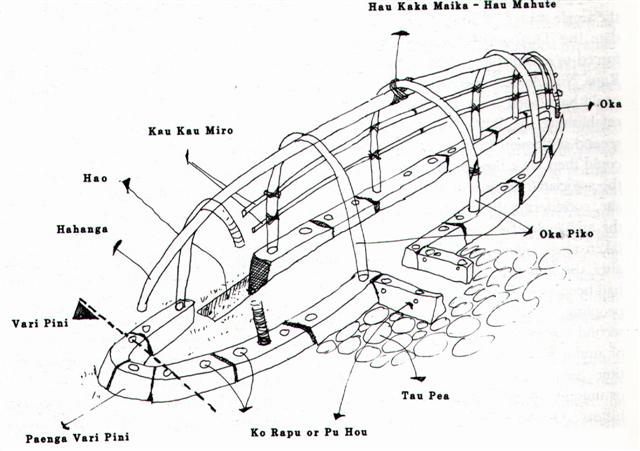6. If we count with 364 / 2 = 182 (= 13 * 14) days to the end of the 1st half of the year, then we will reach ika hiku (the 'tail fish', cfr at Parehe) in Ga7-12:
Tamaiti in the preceding Ga7-11 comes 59 + 181 = 240 days after tamaiti in Gb7-3. The flat bottom of tamaiti in Ga7-11 suggests 'dry land' in contrast to the cup-formed bulb at the bottom of tamaiti 240 days earlier. To count 71 * 1 is without meaning, instead we should count 7 * 11 = 77, which then becomes an allusion to Ga7-7:
Maybe the reason for the black 32 hare paega nights is that midsummer should be determined by looking at the full moon in the night in order to see which stars are in the background - Sun must be at the opposite side of the sky (cfr at Camp 5): ... The system of Nakshatras, then, is quite distinct from systems that use the appearance of heliacally rising or setting stars as the equinoctial marker. Furthermore, the Indian system is all but unique in that two calendar systems competed with each other - a civil system, in which the year's beginning was at the winter solstice, and a sacrificial year, which begins at the spring equinox. The beginning of the former was determined by the Nakshatra method, observing the winter full moon's apparition near the point of the summer solstice in the sky ... It is easy to find an equinox compared to a solstice because Sun moves quickly at equinoxes, which explains why the more indirect Nakshatra method was used for finding winter solstice. In our hare paega picture the opening surely must be in the east, such was once the ancient norm all over the world - with early light meant to enter into the dark 'house'. 5 ('fire') oka beams resemble the paths of stars rising in the east and descending in the west:
The elliptic outline therefore should have the short ends at the solstices (contrary to our modern conception of more change at the equinoxes). In time-space the solstices are relatively devoid of life and a curve means close to the end. If the Nakshatra method was in the mind of the creater of the G text, then we could find 32 dark nights near day nymber 87, which agrees with their location, viz. immediately beyond glyph number 49 + 12 + 21 + 4 = 86.
7 for the period number can be an allusion to Ga7-7, because 7 is like the first part of 7-7. 32 is, though, probably also to be contrasted with 29, i.e. a sign of much light instead of poor light. We should remember 8 * 32 = 256, which could be a way to indicate when the light from Sun is 'finished':
Rei in Ga5-6 (where 5 * 6 = 30) is located at the beginning of 64 days to day number 180 (i.e. at the beginning of 60 days to Ga7-7 (177). My idea of 2 months beyond 'hare paega' leading up to summer solstice is here once again illustrated. But from spring equinox there are 3 * 32 = 96 days to midsummer. Moreover, we should remember there are 64 days also from Rogo in Gb6-26 to the end of side b. The orbit of earth around the sun is not a circle but an ellips. Therefore spring equinox (day 87) is not at day 91 counted from winter solstice. And summer is shorter south of the equator than north of the equator. 90 days is a quarter of 360 and 91 days a quarter of 364. Periods 8-9 should is some way illustrate the change from the 1st quarter in the calendar to the 2nd:
The pair of hau tea signs perhaps can be related to the pair in autumn:
354 - 90 = 264. With day 87 immediately after the end of the takaure season ('winter') it seems secure to say that the front side of the text in G refers to the first half of the solar year (which begins at winter solstice). And we can then deduce that the calendar refers to the situation south of the equator. Yet, basically it is a Moon calendar. To accomodate the cycle of Sun various methods can be used. The henua calendar stretches not from spring equinox because Moon has 4 months in a quarter:
But the best alternative could be to count with 4 * 32 = 128 days:
Rei at the beginning of the first half and viri at the beginning of the next half are reassuring signs, indicating we have reached the right solution. And at towards the end of the second half we can see a reversal of the sign at the end of the first half. |
||||||||||||||||||||||||||||||||||||||||||||||||||||||||||||||||||||||||||||||||||||||||||||||||||||||||||||||||||||||||||||||||||||||||||||||||||||||||||||||||||||||||||||||||||||||||||||||||||||||||||||||||||||||||||||||||||||

















